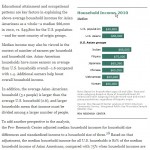The film Blue Like Jazz premieres nationwide next week on April 13th, a film based on the New York Times bestselling memoir by Donald Miller. True to the spirit of the book, which was subtitled, “Nonreligious Thoughts on Christian Spirituality,” the film includes swear words, drinking, a lesbian character, and is open about the hypocrisy found in the Christian church. The adaptation is fun, poignant, and ultimately religious—and that’s what makes this new film so interesting.
 Don Miller is one of the most prominent representatives of a messier modern Christianity, an open and more humanistic orientation toward being a follower of Jesus that avoids a distant “holier-than-thou” stance and relativizes the practices of the modern church. It makes any film based on the book a type of Christian film—more specifically, this new film, featuring an evangelical as the hero, is a new type of “Anti-Christianity” Christian film.
Don Miller is one of the most prominent representatives of a messier modern Christianity, an open and more humanistic orientation toward being a follower of Jesus that avoids a distant “holier-than-thou” stance and relativizes the practices of the modern church. It makes any film based on the book a type of Christian film—more specifically, this new film, featuring an evangelical as the hero, is a new type of “Anti-Christianity” Christian film.
When the book Blue Like Jazz appeared in 2003, it was banned from many conservative Christian bookstores. Not only did it shun a straight-laced image of the faith, it also avoided more strident remarks on the evils of the world, refused to idealize conversion or discipleship, and conveyed stories that were far from the sentimental Sunday School portraits that would have won over the “family-friendly” crowd. Conservative Christians concluded the book did not represent orthodox Christian theology. To top it all off, the book seemed to espouse a more liberal political agenda.
Six years later, a film based on the book arrives—featuring a trailer with a voiceover that says, “I’m ashamed of Jesus”—and a discussion emerges on whether this is a “Christian” film or not.
Conservative Christians have tried to affect the moral content of films through boycotting, like Martin Scorsese’s The Last Temptation of Christ (1988), the gay-themed Priest (1994), and the irreverent comedy Dogma (1999), but boycotting has fallen out of favor. Now the strategy is patronage. Patronage is the active support of films that are morally acceptable, and it is a shrewd strategy that addresses what is most important to movie studios: financial profit. The strategy of patronage succeeded in promoting films like The Omega Code (1999), Jonah: A VeggieTales Movie (2002), Mel Gibson’s The Passion of the Christ (2004), the adaptation of the C.S. Lewis novel The Lion, the Witch and the Wardrobe (2005), the retelling of the Christmas story in The Nativity (2006).
 More on this dynamic can be found in my book Hollywood Faith. Some filmmakers believe “Christian” film should only be made by Christians and for explicitly Christian purposes. Only Christian films should be supported. But the world of Anti-Hollywood “Christian” filmmaking is a strikingly political one defined by a fairly tight orthodoxy. Correctness in doctrine and lifestyle are all-important in this realm. Should young children see it? Does it represent a “biblical” understanding of truth? Will “non-believers” be influenced toward the faith? Behind the designation of a properly Christian film is whether conservative churches endorse the film and whether Christian retailers will eventually sell it.
More on this dynamic can be found in my book Hollywood Faith. Some filmmakers believe “Christian” film should only be made by Christians and for explicitly Christian purposes. Only Christian films should be supported. But the world of Anti-Hollywood “Christian” filmmaking is a strikingly political one defined by a fairly tight orthodoxy. Correctness in doctrine and lifestyle are all-important in this realm. Should young children see it? Does it represent a “biblical” understanding of truth? Will “non-believers” be influenced toward the faith? Behind the designation of a properly Christian film is whether conservative churches endorse the film and whether Christian retailers will eventually sell it.
“Christian” filmmakers also struggle to attract the same financing and talent as major Hollywood studios. Low budgets and a tight ideology have soured the label “Christian” film to mean a “sloppy” film, a “cheesy” film, and one that is more interested in spouting a one dimensional propaganda in presenting a gospel message instead of telling a good story.
No surprise then that the lack of strict orthodoxy draws critics from the “Christian” realm for Miller’s new film. Rebecca Cusey writes that there is a virtual “Christian fatwa” against the film. As Paul O’Donnell writes, the film allows for more nuance in understanding evangelicalism, one that is in conversation with forms of secularism and eschews any tone of moral superiority. This is nothing like either Fireproof (2008) or Courageous (2011) which sought to encourage the faithful. Instead, Blue Like Jazz fails to fall into this recent genre of “Christian” film—to the great satisfaction of Don Miller and director Steve Taylor. The film addresses spiritual struggles in a forthright manner, one that is attuned to the complicated, cosmopolitan, and fiercely egoistic society we live in today.
The basic belief guiding the filmmakers of Blue Like Jazz is whoever controls the media controls the culture. If they are to engage with American culture, they must engage the entertainment industry because movies are considered to be the most important medium for shaping values in society. Alex Field in his book The Hollywood Project writes, “the truth is that every day, films are changing people’s minds, stirring up controversy, unearthing compassion for various causes, and inspiring people to make big decisions that ultimately change their lives.”
Filmmakers like Miller are seeking a different type of status: acceptance by mainstream audience. Miller is quoted as saying, “movies about the faith struggle that millions of Americans deal with don’t have to be cheesy.” Even more, such films “can compete with other films at the box office.” Resisting a fundamentalist segregation, Miller wants to attract people regardless of their faith commitments. They went to venues like the South By Southwest festival in Austin, Texas, to find them.
Ralph Winter is another prominent Christian producer and an active member of his Los Angeles Presbyterian church with an impressive string of credits including four of the Star Trek films, all three of the X-Men films, both Fantastic Four films, and a modern remake of Planet of the Apes. Although Winter struggled with whether he could work in the industry and be a loyal follower of God, he is now a prominent role model for many Hollywood Christian hopefuls. Blue Like Jazz seeks to be associated with this kind of quality filmmaking.
So: Is the film merely Don Miller’s personal story put on the screen? Likely not. So many people resonate with Don Miller and his story (and his subsequent speaking and his books) that the film may well be capturing a more recent type of religious orientation within evangelical Christianity today, one that is being legitimated by his film. And one that is threatening to some conservatives.
And the ability to portray this “Anti-Christianity” Christian could spur the production of even more creative work that puts religion and social change into a broader conversation.











